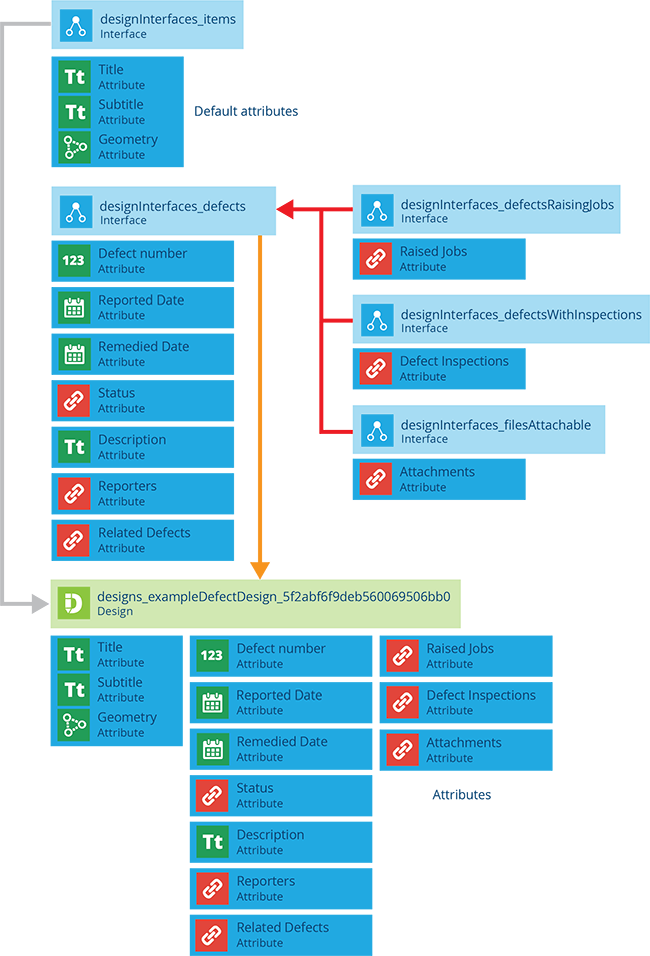Defect designs
Represent a type of defect
CausewayOne Asset Management lets you report possible issues and faults affecting your organisation's assets and operational areas. A defect may be noticed by a worker during a visit, reported by a member of the public, or triggered automatically by sensor readings. You can then decide whether to inspect the defect or go straight ahead with a job to fix it!
To get started, you need to represent those defects in CausewayOne Asset Management:
-
Create a design for each defect type you want to monitor.
-
On each defect design, add attributes for any extra data points you want to record about that defect type. This may include implementing one or more interfaces to inherit their attributes alongside the ones on the design.
-
Create items of defect designs to represent reported defects.
Create a defect design
To create a design that represents a type of defect:
-
On the start screen, select Create design. If you already have one open, select Create design in the top-right corner instead.
-
Choose the Defect design type.
-
Fill in the details and then select Create design.
You can then edit the design to manage its attributes, links and other properties.
If you're unable to create a design, your user account may lack the required permissions.
Standard defect design details
All defect designs implement the Defects interface. Therefore, all defect items inherit a standard set of properties and attributes. Required attributes are marked with an * asterisk.
Details
If left blank or unchanged, the defect design will inherit the following properties:
-
Applies to - to be usable, a defect design must be applicable to one or more designs. This makes it selectable when creating defects for items of those designs. If an interface is added to this list, the defect design will apply to all designs that implement it.
For example, a Bench Defects design could apply to a Benches design.
To add one to the list, select Add applies to and choose a compatible design/interface. To remove one from the list, select its button.
-
Collections - defect items can belong to any collection except for Inventory.
-
Geometry - is optional and all geometry types are allowed.
-
Icon -
icon-defect -
Colour -
#690095 -
Title -
DEF-Xwhere X is the value of the Defect Number attribute.
Attributes
The following attributes are inherited from the implemented interfaces:
-
Defect Number * - a unique ID number. This is automatically incremented, so the field isn't shown when creating/editing a defect. By default, it's displayed in the title of defect items for easy identification.
NoteYou can configure any Number attribute to automatically increment in this way.
-
Reported Date - when the defect was created.
-
Remedied Date - when the defect was considered closed, with no further attention required.
-
Description - text that typically describes any details of the defect not covered by its other attributes.
Link attributes
The following Link attributes are inherited from the implemented interfaces:
-
Status * - links to a defect status indicating which stage the defect is currently at, e.g. Reported, Completed.
-
Reporters - links to the contact details of the person(s) who reported the defect.
-
Related Defects - links to any other defects related to the defect.
-
Attachments - links to any uploaded files related to the defect.
-
Raised Jobs - links to any jobs arising from the defect.
-
Defect Inspections - links to any inspections of the defect.
Interfaces
The following interfaces are inherited directly:
- Defects
The following interfaces are inherited indirectly via the above interfaces:
-
Files Attachable
-
Defects Raising Jobs
-
Defects With Inspections
